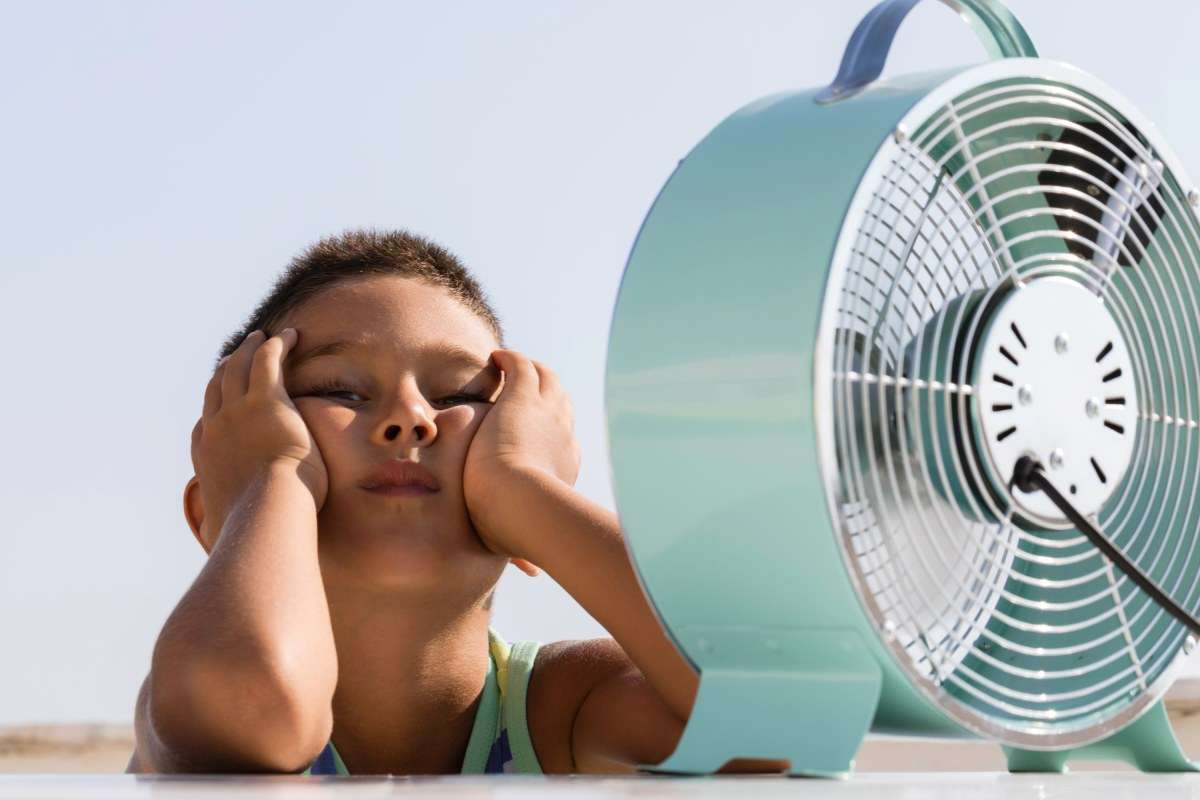“It’s not the heat that gets you, it’s the humidity,” said a dad, somewhere.
His kids might be rolling their eyes, especially if they’ve spent any time in the desert Southwest during the summer, but their dad is at least partly correct: Not only does high humidity make people less comfortable, it also strains air conditioning units. Half of the energy used to power a typical air conditioner is spent on removing moisture from the air.
For companies like Amazon, Walmart, UPS, and FexEx, which operate enormous warehouses, air conditioning has been a growing concern. Temperatures inside warehouses can grow uncomfortably, potentially dangerously hot.
One startup has been working to crack the humidity problem. Transaera is developing a unique air conditioner for homes and apartments that uses a special material to remove humidity before cooling the air. With more than 2 billion people in hot, humid regions still lacking air conditioning, the company hopes it can help meet that demand while reducing the amount of energy required.
But first, while it fine-tunes the product for consumers, it’s deploying larger units for commercial buildings like warehouses. On Tuesday, it installed the first of those on a customer’s rooftop, the company exclusively told TechCrunch. This dedicated outdoor air system (DOAS) dehumidifies fresh air coming into the building, reducing the load on the air conditioner.

“DOAS is a small piece of the market, but it is a growing segment,” co-founder and CEO Sorin Grama told TechCrunch. “It’s just an easier entry point.”
The Somerville, Mass.-based startup, which was founded in 2017, has raised $7.5 million to date, including a $4.5 million seed round, Grama said. It’s currently raising a $6 million to support field trials of its equipment.
Transaera’s core technology is a proprietary material that coats its heat pump’s heat exchangers, which resemble a car’s radiator. In Transaera’s DOAS, air brought into the unit passes over the special material, which removes moisture from the air. The drier air then hits the evaporator coils, which cool the air to match the temperature inside the building.
Air conditioners and dehumidifiers all generate heat in the process of removing humidity from the air. Usually, that heat is wasted, but Transaera reuses it to drive moisture off its desiccant material, which sits on a porous wheel. As the wheel passes through incoming air, it absorbs moisture. The loaded desiccant then rotates away from the incoming air and through the waste heat coming off the evaporator coils. The warm air carries the unwanted moisture outside. In the winter, the system can reverse itself, helping to preserve indoor humidity as the heat pump warms the incoming air.
Many other DOAS systems that live on commercial rooftops today also use heat pumps to dehumidify incoming air, but because they rely on cold temperatures to condense the water on the coils, the air emerging from them can be overly cooled relative to what’s in the building (especially in spring and fall, when temps might not be warm enough to call for air conditioning). The units then have to reheat the air, often using natural gas. “It’s a really inefficient, stupid way of doing these dedicated outdoor air systems,” Grama said.
Transaera’s approach uses as much as 40% less energy than current top-end DOASs, he said.For now, the company’s technology lives on one commercial rooftop, but Grama said more are coming. There’s some urgency: Because removing humidity requires so much energy, it’s responsible for 1% of all greenhouse gas emissions, according to a recent study. That’s about half what aviation generates, a sector that’s received far more scrutiny. Cutting dehumidification’s energy use by 40% would make a serious dent in that. Dad would approve.

